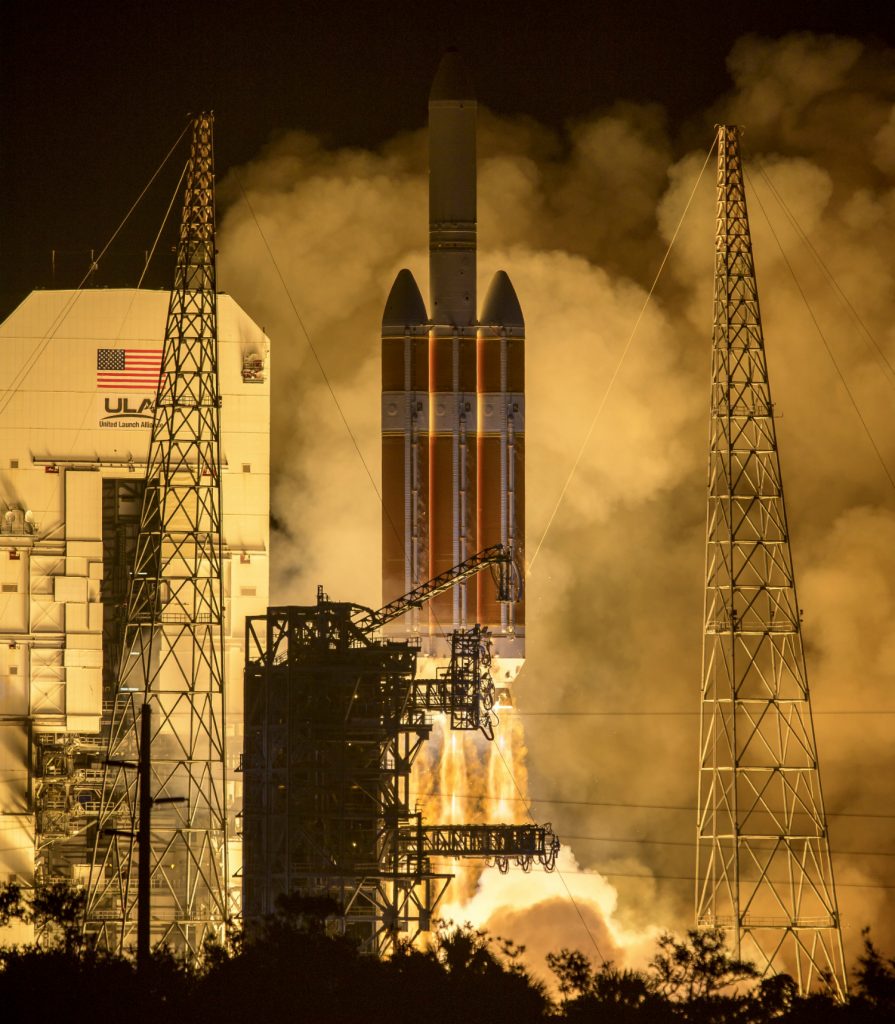[ad_1]
Wasn’t it Superman that was faster than a flying bullet? Well, Nasa’s Parker Solar Probe – which launched on Sunday – is fifteen times faster, and is described as fastest-moving object made by humanity, reaching speeds up to 430,000 miles per hour.
Zooming through space in a highly elliptical orbit, Nasa is planning for it to visit the corona of our star, potentially learning why it is 300 times hotter than the surface of the Sun itself, what drives the supersonic solar wind and what accelerates solar energetic particles…
The idea is that findings will help improve forecasts of space weather events, which have the potential to damage satellites, disrupt radio communications and even overwhelm power grids.
The challenges faced by the probe include shielding the probe from heat of 2,500 degrees Fahrenheit, while some instruments have to be exposed beyond the shield.
How will #ParkerSolarProbe survive in flying through million-degree temperatures? ???? The key lies in the difference between heat & temperature and the spacecraft’s cutting-edge engineering. https://t.co/4NiJoymEdX https://t.co/iS0arNY5Ay
— NASA Sun & Space (@NASASun) August 12, 2018
And then there’s the electronic wiring to consider. To avoid melt from exposure to heat radiation at such close proximity to the Sun, Nasa has grown sapphire crystal tubes to suspend the wiring, and made the wires from niobium….
“We’ll be going where no spacecraft has dared go before — within the corona of a star,” said project scientist Nicky Fox of the Johns Hopkins Applied Physics Lab. “With each orbit, we’ll be seeing new regions of the Sun’s atmosphere and learning things about stellar mechanics that we’ve wanted to explore for decades.”
Why it won’t melt
Heat management is central to the probe, to state the blindingly obvious, and Nasa has explained its approached to the thermal challenge, and the difference between temperature and heat…
Temperature measures how fast particles are moving, whereas heat measures the total amount of energy that they transfer. Particles may be moving fast (high temperature), but if there are very few of them, they won’t transfer much energy (low heat). Since space is mostly empty, there are very few particles that can transfer energy to the spacecraft.
The corona through which Parker Solar Probe flies, for example, has an extremely high temperature but very low density. Think of the difference between putting your hand in a hot oven versus putting it in a pot of boiling water (don’t try this at home!) — in the oven, your hand can withstand significantly hotter temperatures for longer than in the water where it has to interact with many more particles. Similarly, compared to the visible surface of the Sun, the corona is less dense, so the spacecraft interacts with fewer hot particles and doesn’t receive as much heat.
That means that while Parker Solar Probe will be travelling through a space with temperatures of several million degrees, the surface of the heat shield that faces the Sun will only get heated to about 2,500 degrees Fahrenheit (about 1,400 degrees Celsius).
 The Parker Solar Probe is using a heat shield known as the Thermal Protection System, or TPS, measuring 2.4meters in diameter and 115mm in thickness. This will provide protection enough, says Nasa, so that on the other side of the shield the spacecraft body will sit at a comfortable 85F (30C).
The Parker Solar Probe is using a heat shield known as the Thermal Protection System, or TPS, measuring 2.4meters in diameter and 115mm in thickness. This will provide protection enough, says Nasa, so that on the other side of the shield the spacecraft body will sit at a comfortable 85F (30C).
Outside the shield
But it seems some instruments will not be hiding behind the shield. A Solar Probe Cup is one of two instruments, says Nasa, that will not be protected.
A Faraday cup, it’s a sensor to measure the ion and electron fluxes and flow angles from the solar wind.
Due to the intensity of the solar atmosphere, unique technologies had to be engineered to make sure that not only can the instrument survive, but also the electronics aboard can send back accurate readings.
The cup itself is made from sheets of Titanium-Zirconium-Molybdenum, an alloy of molybdenum, with a melting point of about 4,260 F (2,349 C). The grids that produce an electric field for the Solar Probe Cup are made from tungsten, a metal with the highest known melting point of 6,192 F (3,422 C). Normally lasers are used to etch the gridlines in these grids — however due to the high melting point acid had to be used instead.
 Pictured right is the Parker Solar Probe inside one half of its 62.7-foot-tall casing.
Pictured right is the Parker Solar Probe inside one half of its 62.7-foot-tall casing.
“It was a very quiet launch countdown, it went off like clockwork,” said Omar Baez, NASA Launch Director. “Parker Solar Probe has been one of our most challenging missions to date. I’m very proud of the team that worked to make this happen. We at NASA and the Launch Services Program are thrilled to be part of this mission.”
Fascinating, and truly impressive engineering. And you can track the latest news on the progress of the project on the Nasa website.
“Little by little the night turns around….”
Images: NASA/Johns Hopkins APL/Ed Whitman
[ad_2]
Source link

